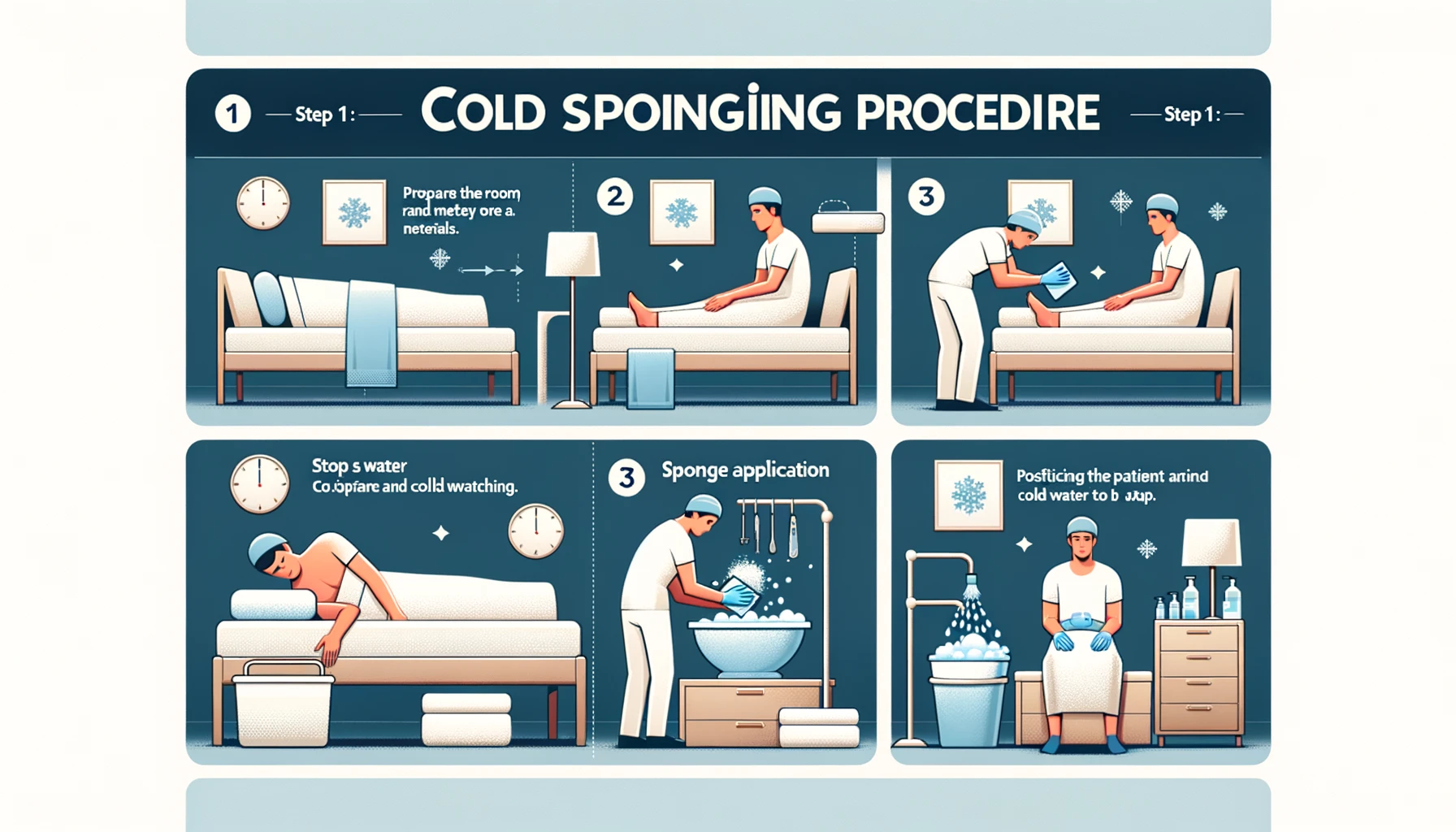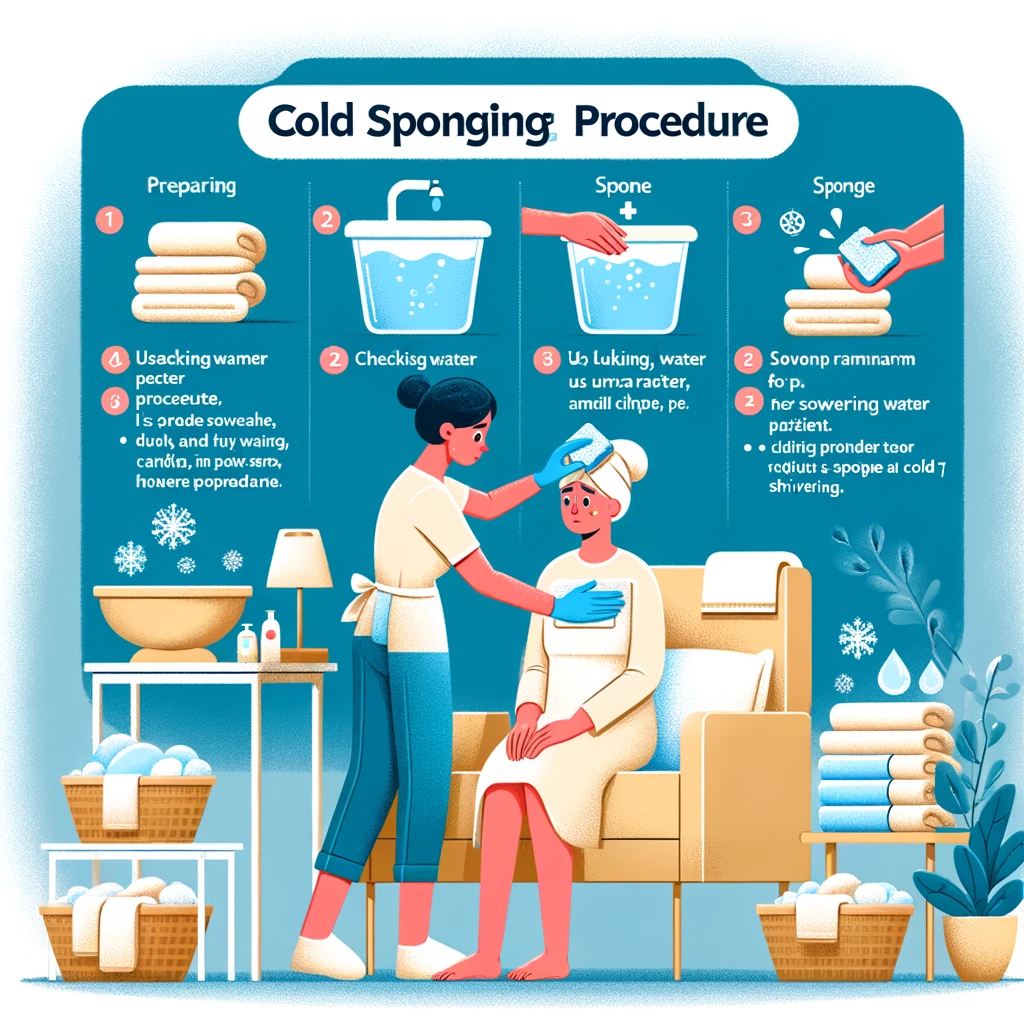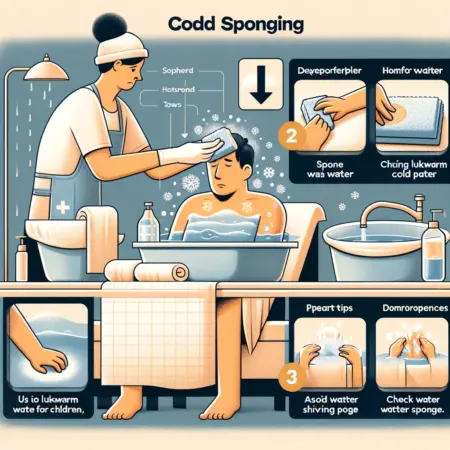What is cold sponging procedure.Cold sponging is a general application of moist cold liquid usually water to cold the skin and reduce body temperature.It’s important to note that while cold sponging can help reduce fever, it should be used as part of a broader treatment plan under the guidance of healthcare professionals. If fever or high body temperature is a concern, it’s advisable to seek medical advice.
Cold sponging, also known as tepid sponging, is a procedure typically used to reduce fever or body temperature. It involves the use of a sponge or cloth soaked in water (usually lukewarm, not cold) to gently sponge the body.

Temperature of water for cold sponging-below 70°F. Usually
65°F.
Temperature of water for tepid sponging—78°F—S0°F.
Purpose
- To reduce body temperature.
- To stimulate blood circulation and respiratory movement.
- To stimulate excretion through kidney and skin.
- To decrease toxicity in case of toxemia due to some cause.
- To quite nervous and delirious patient.
Material Required
Wash basin. 2. Bath thermometer. 3. Ice cold water. 4. Large rubber mackintosh to cover whole length of bed. 5. Bathtowel. 6. Draw sheet and bath blanket. 7. Wash cloths. 8. Basin with ice pieces. 9. Ice cap with cover 10. Spirit. 11. Bucket for collection of waste water. 12. Clinical thermometer. 13. Cold drink in a feeding cup.
You Must Know About Cold Sponging Procedure.

- Inform the proceeding to the patient.
- Put bed side screen.
- Collect all materials at bed side table.
- Take patient’s temperature before starting the procedure and note it.
- Fan folds top cover to foot of bed replacing with bath
- Place rubber sheet and draw sheet under patient to cover entire matres.
- Remove patient’s clothing from body.
- Place ice cap to patient’s head.
- Bath the face first and dry with towel.
- Expose upper half of the body.
- Place a cool moist cloth over axilla and groin so as to cover the large superficial vessels. This will further help in lowering the body temperature.
- Change the cloth when it is warm.
- Change the water when it is warm by discarding in bucket.
- Use a downward motion. Sponge arm and neck for 3-5 minutes. The back, front and buttock should be sponged.
- Do not wipe and dry with towel. Let the water stick and evaporate by itself. Evaporation causes cooling. This is required to cool body temperature.
- Like wise sponge lower extremity for 3*5 minutes.
- While sponging one half cover other half of the Do not expose the whole body at a time.
- After whole body sponging is completed, dry the patient by putting the towel and not by rubbing it.
- Now give a light spirit rub by cotton swab.
- Put on dress or gown to the patient.
- Remove draw sheet, mackintosh, replace top cover, remove bath blanket.
- Leave ice cap for half an hour.
- Take patient’s temperature by clinical thermometer have hourly for two hours.
- The entire sponging should take 15 to 20 minutes depending on temperature of body cooling and patients tolerance or comfort.
- Record the procedure in chart.
- Intimate if any abnormality in body temperature to the attending physician.

